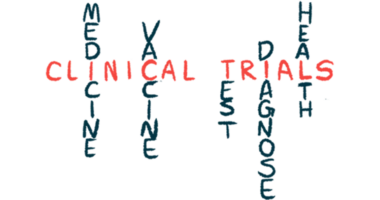Hepatitis C Virus Is Major Predictor of Liver Cancer in Hemophilia, U.S. Inpatient Data Reveals

Past infection with the hepatitis C virus (HCV) is the major risk factor for hepatocellular carcinoma (HCC), the most common type of liver cancer, a large study analyzing more than 18,000 U.S. inpatients with hemophilia reported.
HCV infection is also a major risk factor for the general population, but the study stresses that hemophiliacs can be particularly vulnerable, given their past exposure to clotting factor infusions that might have been infected.
Because of its large sample size, the report also provides baseline data to help establish the impact of new antiviral therapies for hepatitis C in the future, researchers say.
The study, “Incidence and risk factors for hepatocellular cancer in individuals with haemophilia: A National Inpatient Sample Study” was published in the journal Haemophilia.
Hepatocellular carcinoma (HCC) is the second-leading cause of cancer deaths worldwide.
This type of liver cancer can arise from an infection with the hepatitis C virus (HCV), which causes hepatitis C — a type of liver inflammation that can lead to cirrhosis (scarring of the liver) or cancer.
Usually, HCV infection lasts a lifetime if not treated. It often spreads by contact with infected blood, which can happen during clotting factor infusions, a common prophylactic (preventive) treatment for hemophilia.
In fact, 90% of the hemophilic patients who were exposed to clotting factor concentrates before the availability of viral inactivation methods and recombinant technology were infected with HCV.
In these people, this infection is the leading cause of cirrhosis, end-stage liver disease and HCC.
Yet the incidence of HCC in hemophilic men has remained low and the introduction of antiviral therapy for the human immunodeficiency virus (HIV) and HCV infection has slowed the progression of related liver disease.
Still, current trends need to be established as a baseline to assess the benefit of newer, more effective HCV therapies such as the recently introduced direct-acting antivirals (DAAs).
For that purpose, researchers evaluated the characteristics of HCC in adult men with hemophilia versus men without hemophilia.
They reviewed the clinical records of a large sample of U.S. patients with hemophilia A or hemophilia B (18,098), and non-hemophilic individuals (42,626,179), identified from hospital discharges registered at the National Inpatient Sample (NIS) database between 1998 and 2014.
The NIS is the largest publicly available all-payer inpatient database in the U.S., representing about 20 percent of all discharges, including patients covered by Medicare, Medicaid and private insurance as well as the uninsured.
Several risk factors for hepatocellular carcinoma were analyzed, including hepatitis C, hepatitis B, HIV, smoking, alcoholism, obesity and hyperlipidemia (high levels of lipids, such as fats, cholesterol and triglycerides, in the blood).
One of major strengths of this study was its large sample size, which allowed researchers to detect differences in risk factors for a rare disease such as hemophilia. It was also the first to compare the demographics, risk factors and outcomes associated with HCC in hemophilic versus non-hemophilic subjects using the same database.
The data showed that the prevalence of HCC among hemophilic men was 0.79%, as compared with 0.26% among non-hemophilic men.
Such a rate was consistent with prior reports, and confirmed the increasing rate of HCC in individuals with hemophilia, researchers said.
Among hemophilic patients, those who developed HCC were more likely to be older (average of 58.8 versus 48.0 years), Caucasian, (75.33% versus 68.78%), and to have received platelet transfusions, (9.66% versus 1.88%) compared with those without the cancer.
Those with HCC also had greater comorbidity levels (one or more disorders concurrent with the primary disease) and mortality rates.
Of note, hemophilic men with HCC had higher rates of HIV infection (19.21% versus 1.68%) and HCV infection (79.66% versus 33.01%) compared to those without HCC.
Among hemophilic patients, the most significant risk associated with HCC was the presence of HCV infection. The odds of developing this cancer were 15 times higher in those infected with HCV than in those who were not.
Other variables increasing HCC risk were liver necrosis (the death of liver cells), platelet transfusion, older age and comorbidity score (Charlson index).
The results support “the importance of chronic HCV infection arising from past clotting factor exposure in the development of HCC in hemophilia,” researchers wrote.
“These findings provide critical baseline data to help establish the future impact of the recently introduced [direct-acting antiviral] therapy on HCC incidence and HCC mortality rates in those with hemophilia,” they concluded.






